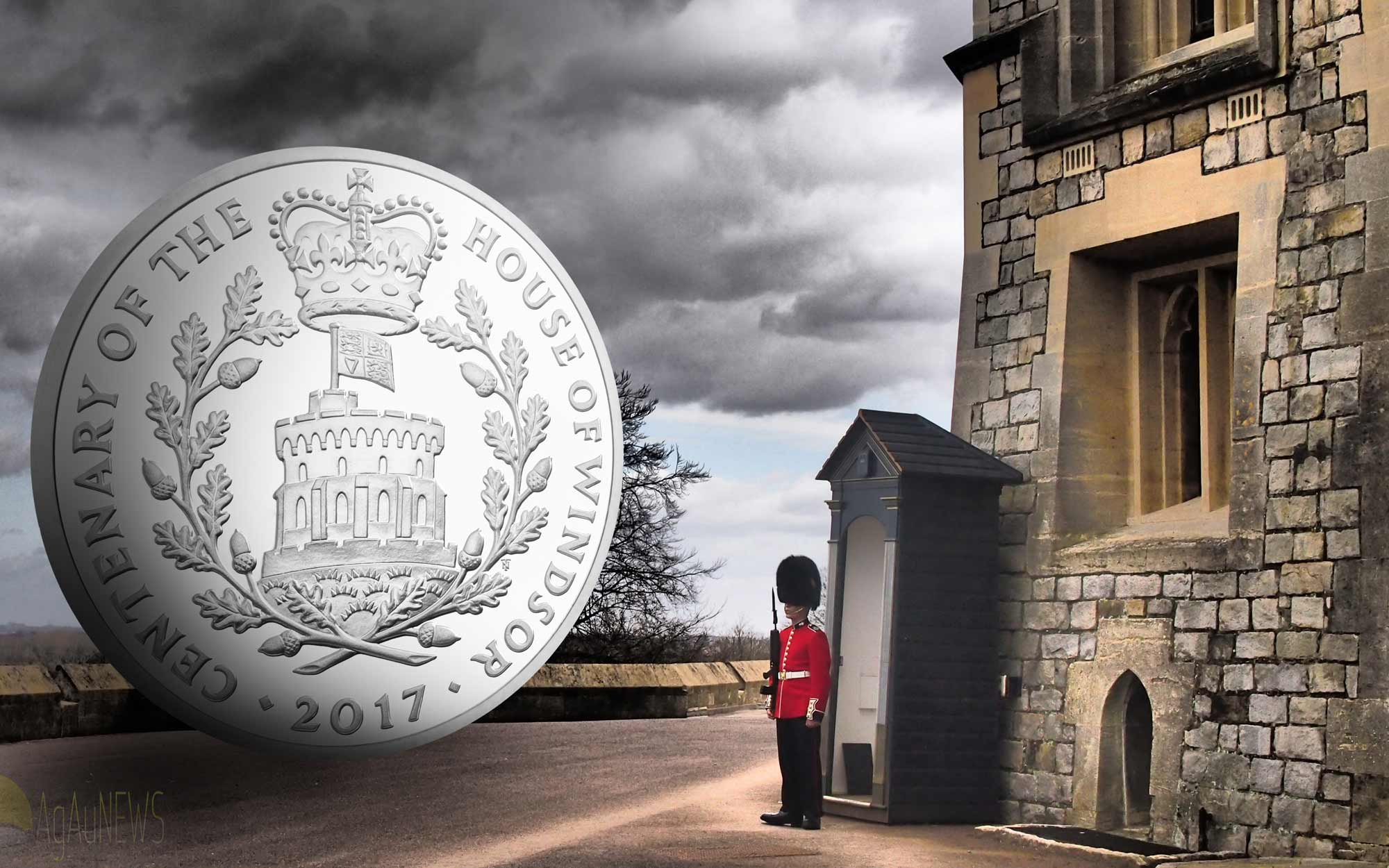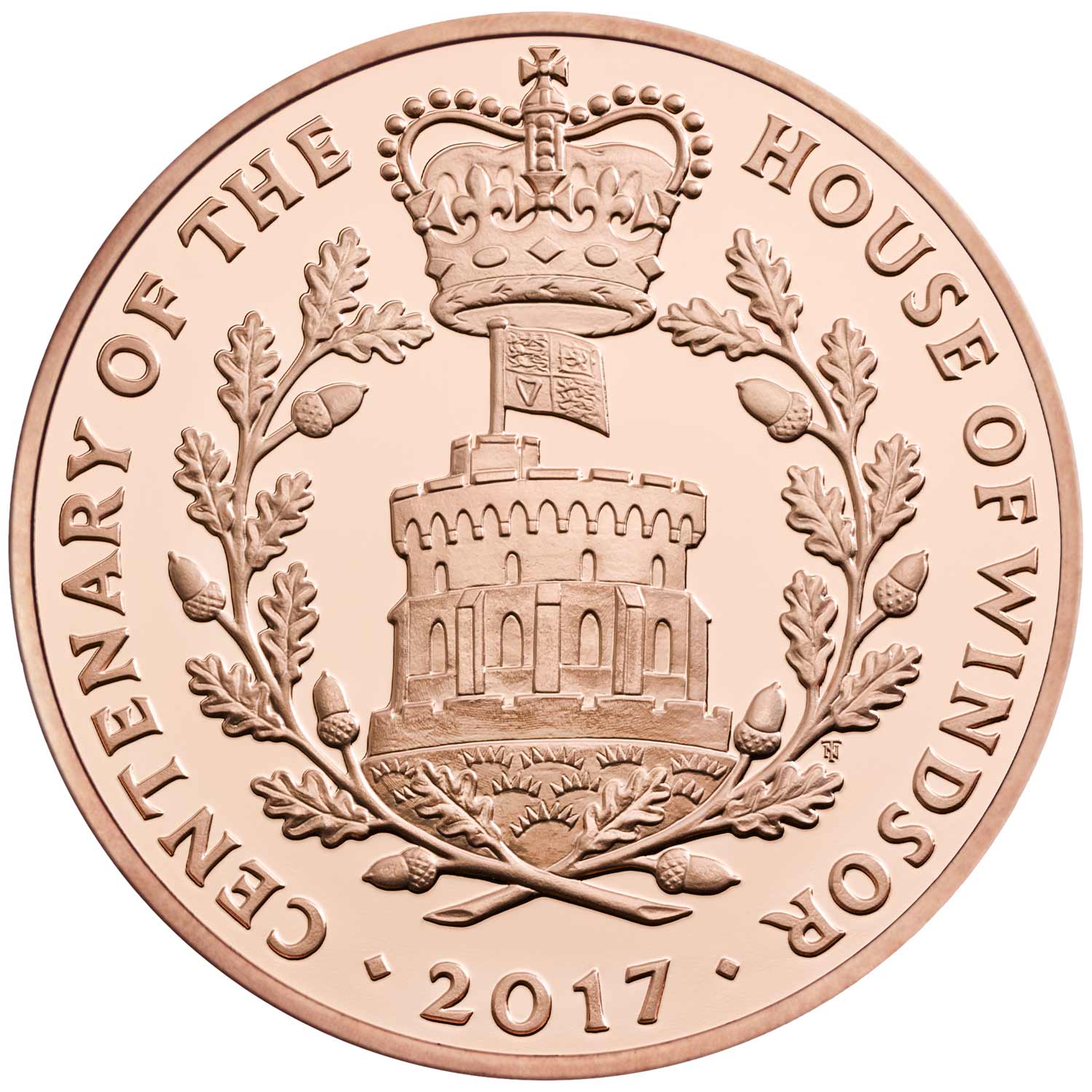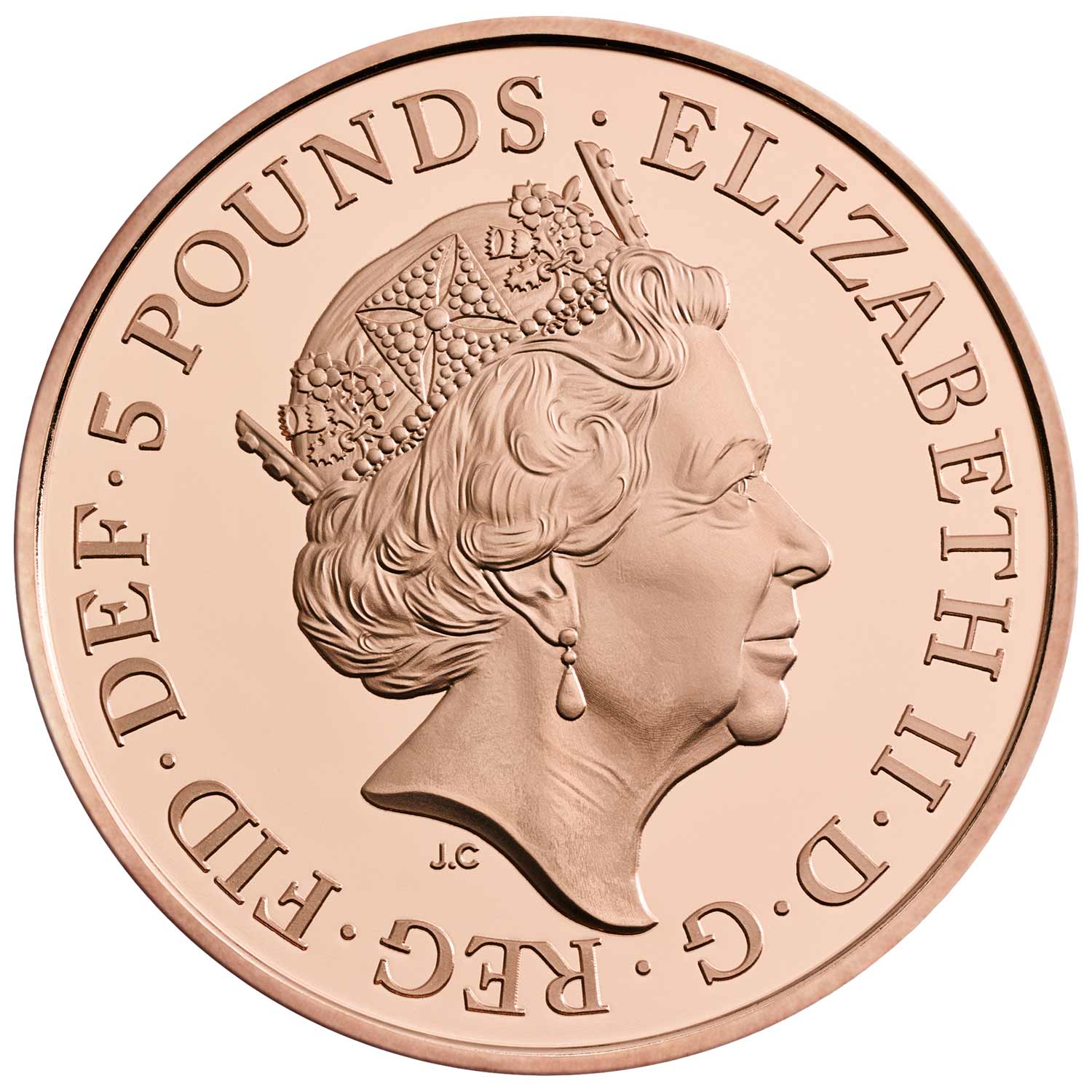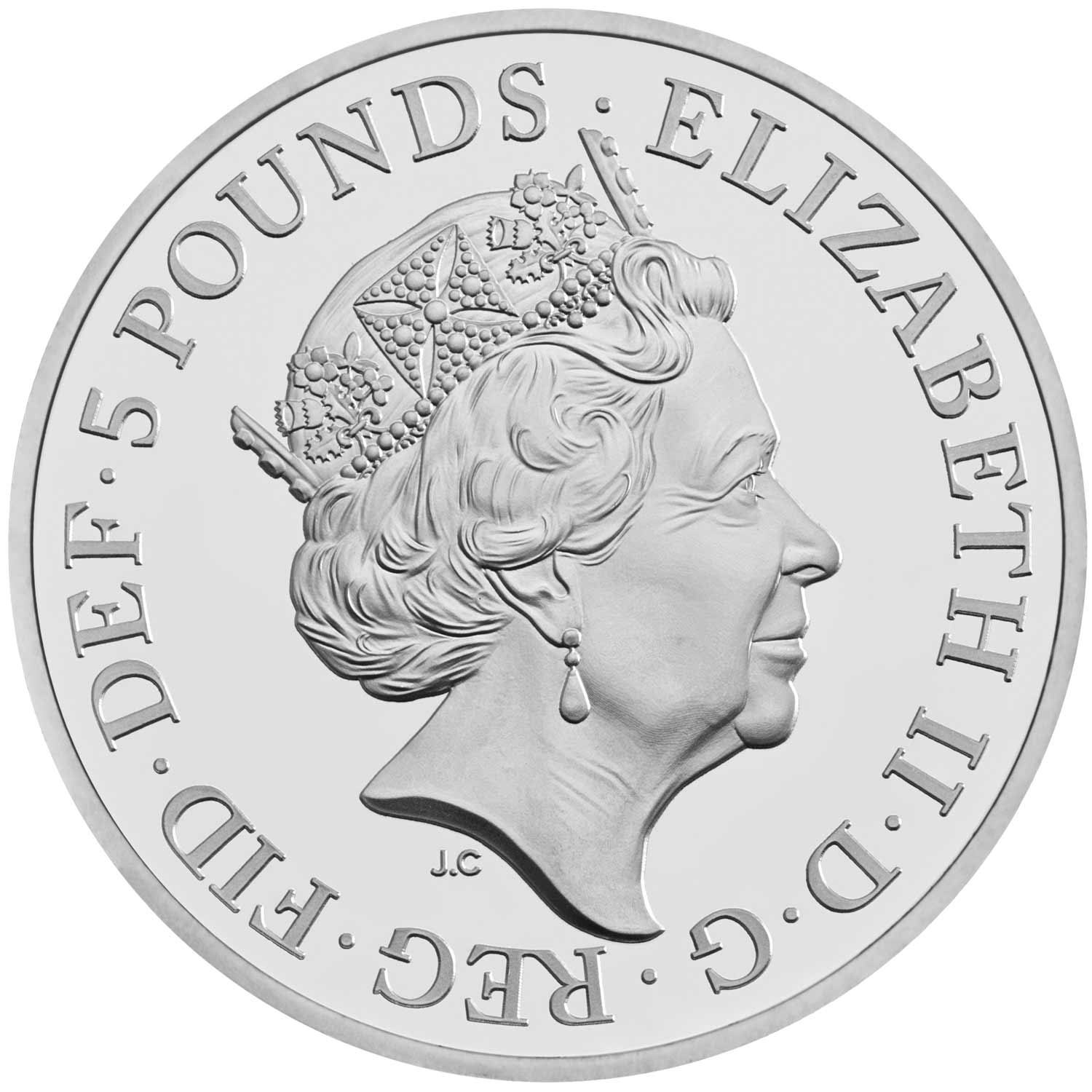The House of Windsor is a century old and the Royal Mint commemorates in gold and silver
We’ve already taken an early look at these back when the Royal Mint announced their range for 2017, but to recap, these coins are issued in commemoration of a century since the founding of the House of Windsor. The name of the British monarchy, it was changed from the rather less British surname, House of Saxe-Coburg and Gotha, when it became shall we say, ‘less than fashionable’ in the First World War to have a German surname. To quote Captain Blackadder when told by Captain Darling “Look, I’m as British as Queen Victoria!”, he said “So, your Father’s German, you’re half-German and you married a German?” Not a million miles away from the truth. Hence, Windsor.
There are three coins in the range, all identical in design apart from the denomination, even down to the diameter. The cheapest of the three is the one standard ounce (28.28g) sterling silver coin. The piedfort (double-thickness) coin is identical in composition but twice as heavy, but we think notably poorer value for money. The last is a near 40 grams 22kt (0.9167) gold variant, a size that the Royal Mint has used for its £5 commemorative issues for quite some time. All have a proof finish.
The design is one of a style the Royal Mint does well, quite heraldic and very British. The tower from beautiful Windsor Castle is pretty iconic and well known and there’s little doubting what is being commemorated here. Available to buy from later today, mintages are 13,000 for the standard silver, a smaller 5,500 for the piedfort, and an odd 884 for the gold, although these date from January and may have changed. As is typical of the Royal Mint, packaging is classy and solid. Royal Mint collectors will like this we’re sure.
MINTS DESCRIPTION
The House of Windsor came into being in July 1917 by proclamation of George V, heralding the birth of a new royal dynasty. The German name of Saxe-Coburg-Gotha had come to the Royal Family in 1840 with the marriage of Queen Victoria to Prince Albert, but after some anti-German feeling during the First World War, the decision was made to be known as the House and family of Windsor.
The focus of the badge of the House of Windsor is Windsor Castle’s Round Tower. The castle, built in the eleventh century, is the oldest and largest continually occupied castle in Europe. The Queen herself spent much of her childhood there during the Second World War, when German bombing raids on London made it too dangerous for the Royal Family to sleep at Buckingham Palace. Windsor remains one of The Queen’s favoured retreats, and the place she chose to celebrate her 90th birthday in 2016, with a public walkabout to meet the crowds of well-wishers.
On 20 November 1992 a major fire, lasting 15 hours, caused widespread damage but careful restoration has now returned the ancient building to its former glory.
Garter King of Arms, Thomas Woodcock, principal adviser to The Queen on matters of ceremony and heraldry said: “The Royal Badge of the House of Windsor was approved by George VI in 1938. It was the king’s suggestion to include the Round Tower of Windsor Castle flying the Royal Standard (flown when the sovereign is in residence) and he particularly wanted the flag to look as though it was blowing in the wind.
“The sprigs of oak in the badge are a reference to Windsor Forest. They define the base of the mount on which the castle stands and also support the Royal Crown. The badge was originally approved with the older version of the Royal Crown but altered to the version currently used when the present queen ascended the throne.”
THE COIN DESIGNER BY THE ROYAL MINT
Timothy Noad has worked extensively in the fields of calligraphy and heraldry and is a Herald Painter at HM College of Arms in London. He specialises in work on vellum, using traditional gilding and painting techniques. His previous designs for The Royal Mint have included a Sovereign for The Queen’s Golden Jubilee and a series of £1 coin designs based on the floral emblems of England, Wales, Northern Ireland and Scotland.
“I am often asked to draw and paint the Royal Arms and badges and, while their design is strictly established, it is possible to make some minor adjustments in the layout. I always try go back to original sources rather than copying someone else’s heraldic painting, so looked at photographs of the Round Tower at Windsor Castle, St Edward’s Crown and natural oak leaves. I was working within a circle but the original badge was oval so I re-drew the oak branches and the Round Tower to fit in.
“The crown was enlarged slightly to sit nicely with the lettering of the inscription. I wanted a clean, stylised and traditional look, which I felt was appropriate for the history and continuity of the House of Windsor.”
SPECIFICATION
| NAME | 2017 SILVER | 2017 PIEDFORT | 2017 GOLD |
| DENOMINATION | £5 UKP | £5 UKP | £5 UKP |
| COMPOSITION | 0.925 silver | 0.925 silver | 0.9167 gold |
| WEIGHT | 28.28 grams | 56.56 grams | 39.94 grams |
| DIAMETER | 38.61 mm | 38.61 mm | 38.61 mm |
| FINISH | Proof | Proof | Proof |
| PRICE | £82.50 | £155.00 | £1650.00 |
| MINTAGE | 13,000 | 5,500 | 884 |
| BOX / COA | Yes / Yes | Yes / Yes | Yes / Yes |







Leave A Comment